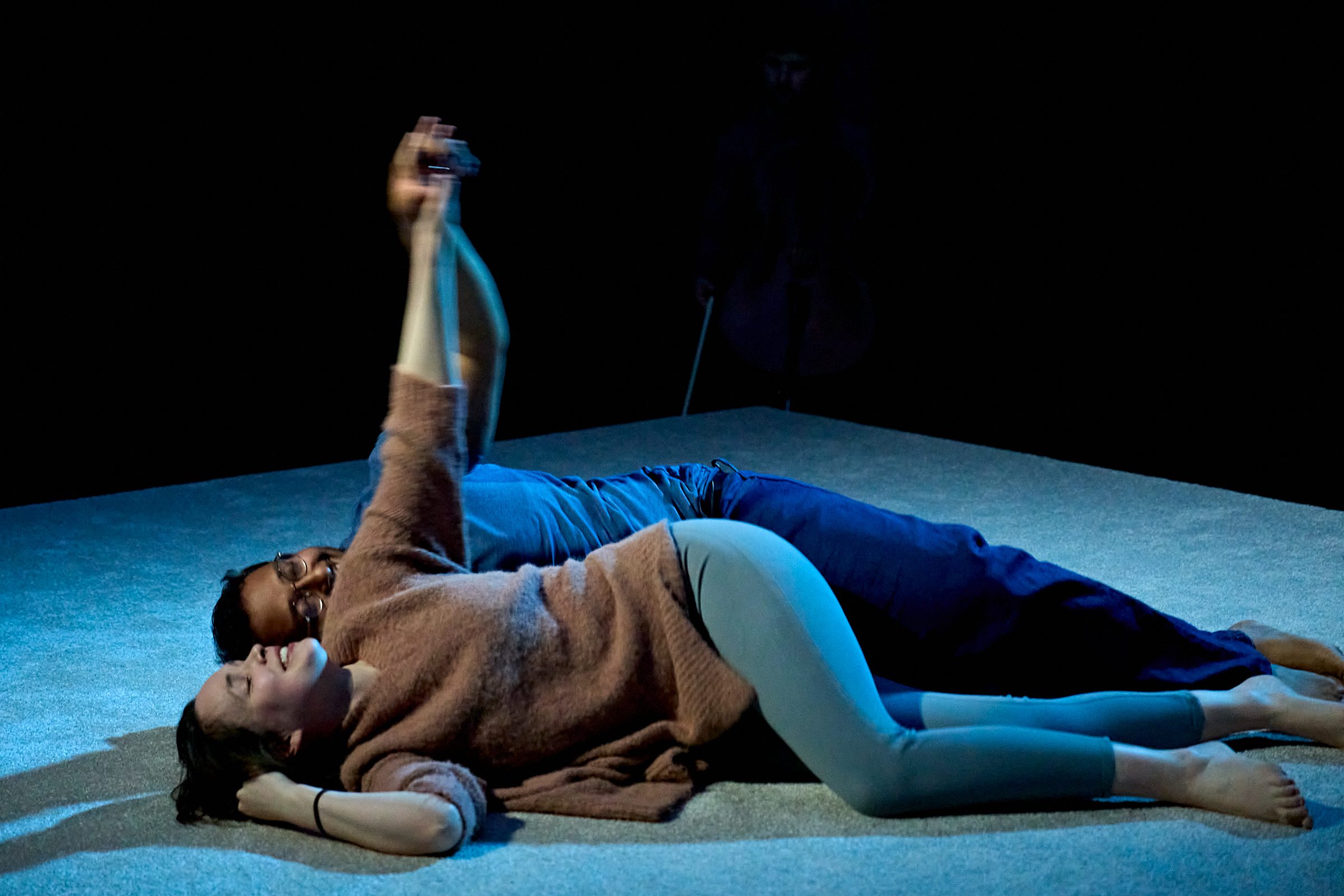Rambert Dance Company – Seven for a Secret Never to be Told (Salford)
Rambert have been at the heart of the British dance scene for 85 years. Seven For a Secret is a compelling insight into child behaviour and psychology. Artistic Director, Mark Baldwin delights in exploring the tensions between the inside, outside and playful world of children. The repertoire includes seven movements and tonight, we’re treated to three of them.
‘The Art of Touch’, first choreographed by the legendary Siobhan Davies CBE in 1995 came from interests alighting from the workings of a harpsichord. The music of Scarlatti and more recently Matteo Fargion explore correlations between dancer and instrument. Davies has always been a choreographer interested in what a human body can endure. One moment, the dancers are stretched, like an over strung instrument, the next; they are asked to move with bizarre prettiness.
The set – brushed and rusted metal – throws dramatic shadow over the stage and the dancers are lit like ghosts in their rich purples and sea-greens. The effect is between dream and nightmare which disconnects and informs with the same absurdity as life’s exotic triumph and prosaic plod.
The world premiere of, ‘Seven for a secret, never to be told’, opens in a fantasy forest, somewhere in a child’s imaginings. It’s a quirky homage to Ravel’s opera, L’enfant et les sortilèges. Conductor, Paul Hoskins unearths elements of Hollywood musicals and traditional Oriental bents. The dance is a classical derivation with clear storytelling and the quirk comes from an almost linear storyline. Indeed, the costume (part Girl Guides, part The Lost Boys and mostly The Famous Five) is perfect and propels the idea that the individual dancer has a unique character.
The ensemble is irreverent and delightful but it is in the variation from South African, Dane Hurst, that the piece really pumps. His wonderful phrasing of the solos is masterful, beat-perfect and, like watching an unselfconscious child; beautiful.
‘A Linha Curve’ comes after the second interval and it is clear why this has been saved for the finale. Dancers lit from above in colourful lines, with music by Percossa are tribal, yelping and an African carnival feast. Pop-Art, the eighties and Once Were Warriors are referenced and out of it comes a dirty, celebratory, gang of urban youths, howling at their indestructibility.
If other dance companies were to take heed from Rambert’s continuation to be as inventive, flamboyant, ambitious and clever, no doubt they would sell-out every night.
– Lucia Cox










